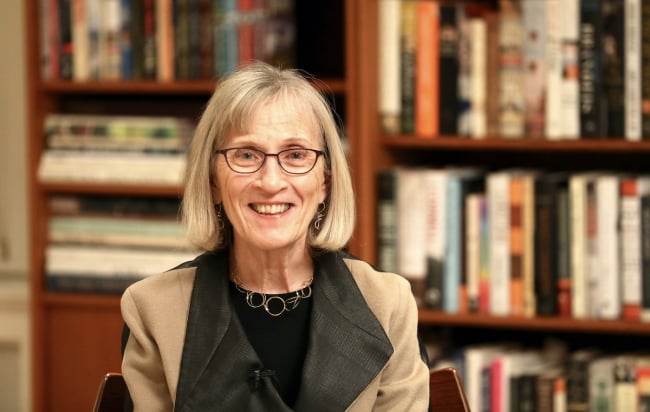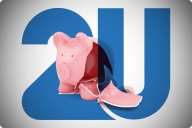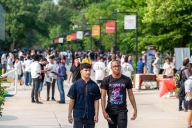You have /5 articles left.
Sign up for a free account or log in.

Claudia Goldin, one of the researchers behind the UWE Challenge, said it inspired universities who were not part of the experiment to work to improve their retention and recruitment of women economics majors.
Claudia Goldin
An experiment to encourage more women undergraduates to study economics produced mixed results but succeeded in bringing awareness to the gender disparities in the field, according to a new working paper published by the National Bureau of Economic Research.
Dubbed the Undergraduate Women in Economics (or UWE, pronounced like the word “you”) challenge, the study asked 20 college economics departments to implement “light-touch” initiatives for one year aimed at recruiting and retaining female students.
The goal of the UWE Challenge, according to the report, “was to uncover why women do not major in economics to the same degree as men and to assess what could be done about the disparity.” Even though more women than men are enrolled in higher education, male economics majors outnumber female economics majors 2.5 to one. The challenge was funded by the Alfred P. Sloan Foundation, providing $12,500 to each treatment institution—meaning an institution that implemented interventions.
The researchers behind the challenge, Tatyana Avilova of Bowdoin College and Claudia Goldin of Harvard University, did not give specific guidelines on what strategies each department should use, but they outlined potential examples, including providing students more information about the major and potential career paths, coordinating mentorship and peer support, and adjusting course content, especially in introductory courses, to appeal to a wide range of students.
Analysis comparing students who were freshmen and sophomores during the experiment in 2015 at the 20 treatment institutions versus at the 68 control institutions showed that the effectiveness of the interventions varied based on the type of institution. Economics departments at liberal arts colleges did successfully increase the number of female economics majors they enrolled, while large research institutions generally failed to do the same. Larger institutions that ran their own experiments analyzing the effectiveness of their unique recruitment and retention strategies were more likely to see an increase than those that did not.
The researchers proposed a number of potential reasons why larger institutions may have struggled more than smaller institutions. Firstly, the universities’ vast student populations may have made it hard for the departments’ interventions to reach many students. Secondly, faculty members may have been reluctant to put the time and effort into carrying out the interventions long term, and their department chairs may not have wanted to place extra work on female and underrepresented professors.
“I think the real problem was whether they had someone who was paying attention. This is why the liberal arts colleges did so well. They were really paying attention. The bigger schools—let’s face it—they have faculty for whom … their research is the most important part,” Goldin said in an interview. “If you had someone in the institution who was really dedicated to this, then it worked."
Lessons Learned
Just because an institution wasn’t successful at attracting women economics majors doesn’t mean the researchers didn’t glean useful information from the UWE Challenge.
At the University of Colorado at Boulder, professors tried to give students better information about how they were doing in an introductory microeconomics class. In a randomized experiment with a relatively small sample size of 163, students in that course were asked to explain how they thought their grade compared to grades earned by past students who went on to get their degree in economics; a subset of those students was then given the actual answer.
This strategy derived from a belief that female students are particularly sensitive to grades, leading them to study subjects in which they score higher. Economics professors tend to be less generous with A’s than those in other fields, according to Francisca Antman, an associate professor of economics at Colorado, so the department aimed to show women students that they were doing well in their introductory courses even if they did not earn A’s.
But the effort didn’t work, and, in fact, asking female students to analyze their grades ended up being detrimental. According to a paper by Antman and two colleagues that is currently under review, female students who were asked to think about their grade relative to graduates who studied economics were 16 percent less likely to major in economics than women in the control group. Those who were then given the real information about their relative grade also chose economics as a major less often than members of the control group, but not to a statistically significant degree. (This was on top of observational data showing that female students were 119 percent more likely to major in economics if they earned an A-minus or higher in the course versus earning a B-minus or lower, as compared to 73 percent for men.)
“It seems like talking about grades in economics really deterred them from majoring in economics,” Antman said, noting that institutions that gave more simple, straightforward encouragement seemed to do better.
“I think the fact that we have very different rating standards across fields is really a disservice to all students that are really trying to learn about their capabilities, because they’re not getting consistent messages,” she said.
Lasting Legacy
Ultimately, Goldin noted, the major impact of the UWE Challenge may not have been the success or failure of any one institution, but rather how the initiative worked to move the needle regarding women in economics across the field.
“It’s my sense that we prompted many schools who are not in the treatment group … to recognize a problem and to learn from what we and other of the treatment schools said was something that could even the playing field,” she said.
Betsey Stevenson, a professor of public policy and economics at the University of Michigan, agreed—and said that the adoption of UWE Challenge interventions by universities in the control group may have led the success of the treatment institutions to be underestimated in the final report.
“One of the challenges for their whole study was that everybody knew that they were doing this, and that led lots of schools that were not doing interventions to do their own interventions,” she said. “[The findings] are, in some ways, underestimates of the findings because ideally to know the full effects, you would have your controls do nothing.”
Although she did not participate in the UWE Challenge, Stevenson is also part of the movement to recruit women into economics; she has researched how economics textbooks tend to disproportionately feature examples of economic problems and scenarios focused on male characters and stereotypically masculine hobbies, such as sports. She wrote her own textbooks with the goal of incorporating scenarios about experiences her female students might be more likely to relate to, like babysitting.
“If you’re going to attract women to economics, you want to put them in as many familiar situations as you would put your male students,” she said.
Nevertheless, Stevenson believes the challenge was so effective at bolstering the gender equality movement in economics because it was coordinated. She likened it to moving a giant boulder; although economists, professors and researchers—including herself—had attempted to move the boulder in the past, it wasn’t until 20 universities were pushing it at once that it actually inched forward.








